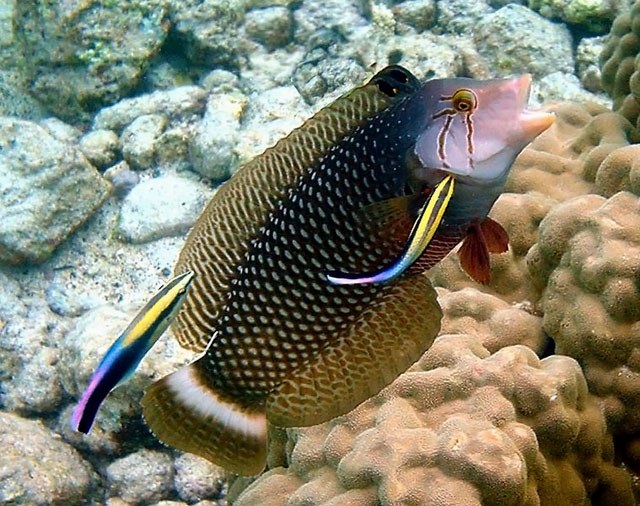In 2011, researchers published a study comparing reef sites with and without cleaner wrasses (Labroides dimidiatus). Their findings were eye-opening and brought into sharp focus just how vitally important cleaner wrasses are coral reefs.
From our 2011 report:
On two patch reefs, researchers removed all cleaner wrasses (Labroides dimidiatus) and maintained them cleaner-free for 8.5 years. A control site (where cleaner wrasses were left alone) was also monitored for the same time period. This is the first-ever investigation on the long-term effects of cleaner wrasses on fish communities.
After 8.5 years, the two removal reefs differed from the control reef in the following ways:
- Damselfish (Pomacentridae) were smaller in size
- Resident fishes were 37% less abundant
- There was 23% less species richness per removal reef.
- The removal reefs also showed a staggering 65% reduction in juvenile visitor fishes (fish likely to move between reefs)
- There was 33% lower species richness of visitor fishes …
- and 66% lower abundance of visitor herbivores such as Tangs (Acanthuridae)
Well, that study is still ongoing. In a 2015 follow-up study, researchers found that the reefs purged of cleaner wrasses greatly decreased the number of recruited juvenile damselfishes compared to control sites with cleaner wrasses.
The takeaway is simple: Don’t buy cleaner wrasses. Not only do they usually fare poorly in captivity, but collecting them from the wild really harms coral reefs. If we remove cleaner wrasses, the fish are smaller, less abundant, and less diverse. And by we, I mean the aquarium trade. We are the only industry with commercial interest in cleaner wrasses. Pretty please, let’s not be that guy.











0 Comments